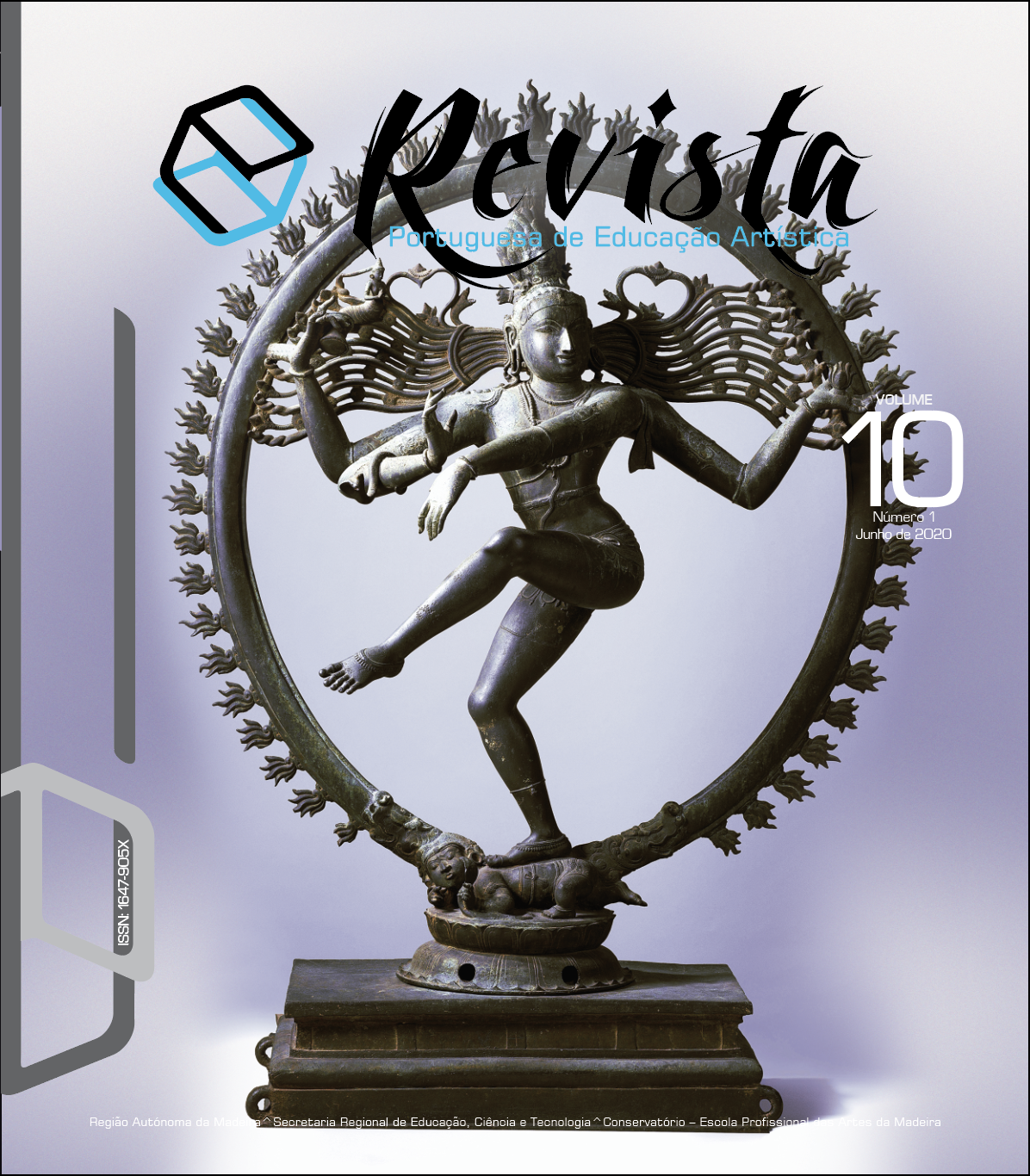Vol. 10 No. 1 (2020): Revista Portuguesa de Educação Artística

We open the current issue with the article “Strategies for Teaching and Learning about Dance”, by professors Maria João Alves and Margarida Moura, from the Faculty of Human Motricity at the University of Lisbon. In this text, the authors seek to contribute with reflections on the different concepts underlying the pedagogical-didactic intervention in dance. It highlights the way in which they present, in a synthetic way, some good practices of teacher intervention, mainly in terms of instruction-feedback, organization / management of the class, the relational climate and discipline in the classroom.
Also noteworthy here is the article on an unusual work from the guitar repertoire: Kotha - Três Danças de Shiva (1967), for percussed guitar, by Giacinto Scelsi (1905-1988). The authors, Nuno Aroso and Ricardo Barceló, professors at the University of Minho, carry out an in-depth study of this work that unites guitar and percussion, and whose very title alludes to influences from Orientalist currents.
Here are two articles that focus on children's opinion and expression: “Music in My Dream School: Giving Voice to Students from Schools in the Autonomous Region of Madeira” and “Artistic Education as a Form of Communication in Time of Pandemic: Children's Representations on COVID-19 ”. In the first case, the authors replicate the research “The School I Would Like” conducted by The Guardian in 2001, in the United Kingdom, in which students were asked what their ideal school would be like. In this case, the referred study was adapted to the reality of Madeira and to the domain of music. In the second case, researcher Mónica Oliveira, from the FBAUP Art, Design and Society Research Institute, seeks to make known and understand the perceptions of pre-school children about Covid-19, through the children's visual narratives.
The paper “Education, Visual Arts and Imaginary – AT-9 as a Methodological Proposal for Understanding the Sensitive”, by Ana Caroline Voltolini e Heloisa Preis, from the Faculty of Psychology and Educational Sciences of the University of Porto, seeks to highlight the applicability of the technique AT-9, conceived by Yves Durand (1987, 2005) in the educational context of plastic arts. The authors conclude that this technique “gives rise to aesthetic experiences that enable the student to a new understanding of himself and his environment”
This issue of RPEA closes with the text "A Singular and Multifaceted Habitus – The Jesuits. Contingencies, Idiosyncrasies and Recognition Strategies in the Condition of Demiurges and Faith Spreaders", by Carmen Diego Gonçalves. The researcher reflects on the specific and multidimensional habitus of the members of the Society of Jesus, addressing some aspects of their journey around the world.



